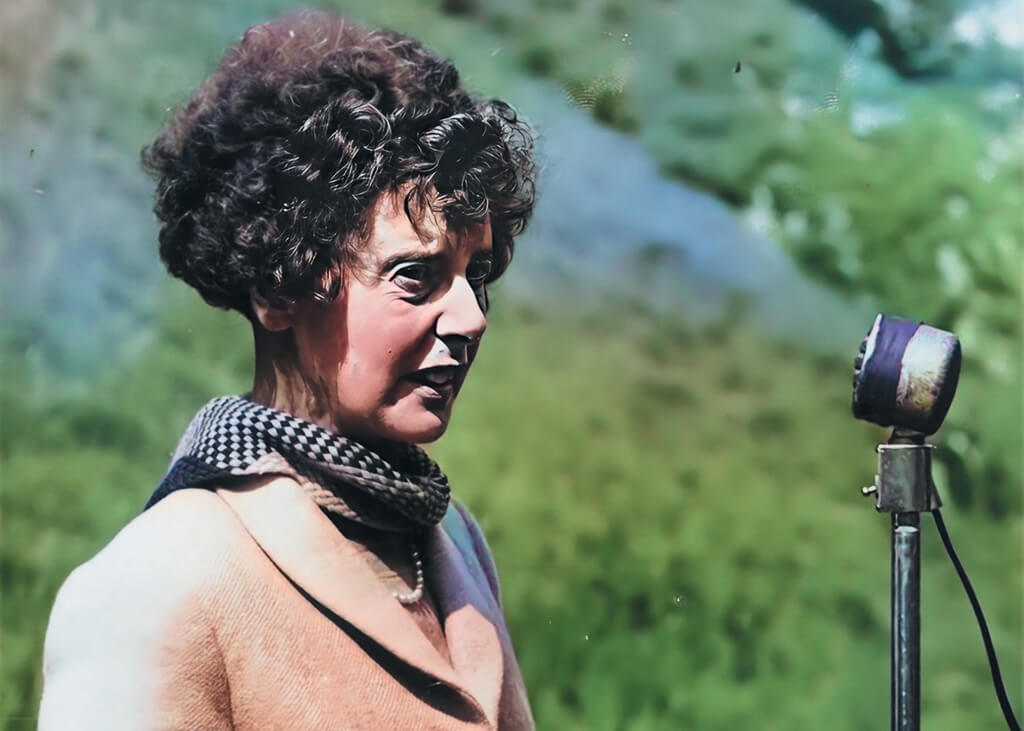The organisation which did more than most to establish a Peak District National Park is 100 years old this month, as Steve Brown reports.
ON May 7, 1924, a small group of men and women, passionate about preserving their beautiful local countryside from the many threats posed by housing and industrial developments, met for the first time in a leafy suburb of western Sheffield. They were some of Sheffield’s leading citizens, largely from academic and professional backgrounds, but united in their cause.

The meeting had been instigated by Mrs Ethel Gallimore, a young woman of means who was the widowed daughter of T.W.Ward, the well-known Sheffield industrialist. She became, together with her future second husband Gerald Haythornthwaite, one of the leading lights within what started as The Sheffield Association for the Protection of Local Scenery and is now known as the Peak District and South Yorkshire Branch of The Council for the Protection of Rural England (CPRE).
From the very start, this became a model for local environmental organisations in England which came to have a wide impact on the conservation and preservation of some of our best-loved landscapes. The Sheffield group’s lasting legacy will be their part in achieving their two “grand purposes”: namely the designation of a national park in the Peak District and the creation of a permanent Sheffield Green Belt.
Ethel and Gerald Haythorntwaite became a formidable partnership, she with the ability to persuade and influence and he with his grasp of technical detail over a wide range of disciplines. In the 1920s, many of the challenges faced by the countryside would be familiar today: car ownership and day tripping, inappropriate building developments, quarrying and litter – to name but a few – but planning legislation to control any of these was either lacking or rarely enforced.
Ethel and Gerald started a lobbying process to press for adequate protection which, over the years, grew and eventually manifested itself in the two “grand purposes” for which the society was created.
An earlier success, however, was the purchase of Longshaw Lodge and its grounds in September 1927. Sheffield City Council purchased the estate – but it was as a result of public appeals in which the Association took part, and generous donations by some of its members, that the funds were raised to repay the council, and the Longshaw property was handed over to the National Trust in 1931 as their first countryside property in the Peak District.
Similar lobbying by the Association resulted in the purchase in 1933 of the extensive Blacka Moor near Fox House, which is now managed by the Sheffield and Rotherham Wildlife Trust.
Ethel and Gerald carried out the survey in 1936/7 which, despite very tight timescales for its completion, produced a first-ever map of a Green Belt for Sheffield, together with a list of recommendations which eventually led to their adoption in 1938 by the City Council.
However, this was just the beginning. In 1937, the CPRE began to start lobbying the government to move forward on the 1931 Report on the creation of National Parks. The Sheffield Association went one step further by resolving to map out such a park in the Peak District and to submit it to the government.
Despite the looming likelihood of war, Ethel pressed ahead regardless by inviting other local bodies such as CPRE branches, footpath societies and interested landowners to form a Joint Committee to push forward the idea of a Peak District National Park. Its first meeting was in January 1939 and Ethel was appointed Honorary Secretary.
With Gerald away on military duty, she continued to work tirelessly throughout the war years on the proposals for the park, particularly the vexed question of whether areas such as Dovedale should or should not be included. In May 1944, the Joint Committee published its proposals, which outlined how significant the Peak District was in respect of its position so close to so many densely-populated areas and that how such vital areas should be protected from adverse development.
The Dower Report followed in April 1945, and such had been the impact of the 1944 Joint Committee report that Ethel was appointed to be a member of the Hobhouse Committee which was charged with taking forward the recommendations from John Dower. The path to the creation of the Peak National Park in 1951 was now clear and Ethel Haythornthwaite and the Sheffield Association had played a major part in this.
Despite successes in repelling such proposals as a steelworks in Edale and a road bypass for Bakewell, the Association hasn’t always had its own way – as evidenced by the giant chimney at the Hope Cement works and the building of a road up the Winnats Pass.
However, their influence is evident in such examples as the large-scale landscaping of the Ladybower reservoir; and the use of local stone to construct the buildings surrounding the Holme Moss television mast near Holmfirth; and re-erection of the Derwent village packhorse bridge at Slippery Stones above Howden reservoir.
Times have changed, Ethel and Gerald have now gone but the Peak District and South Yorkshire Branch of the CPRE still continues. Changes within the Peak Park and the South Yorkshire countryside will continue to be monitored and challenged when needed and its legacy remains as a source of pride to its members, past and present.






